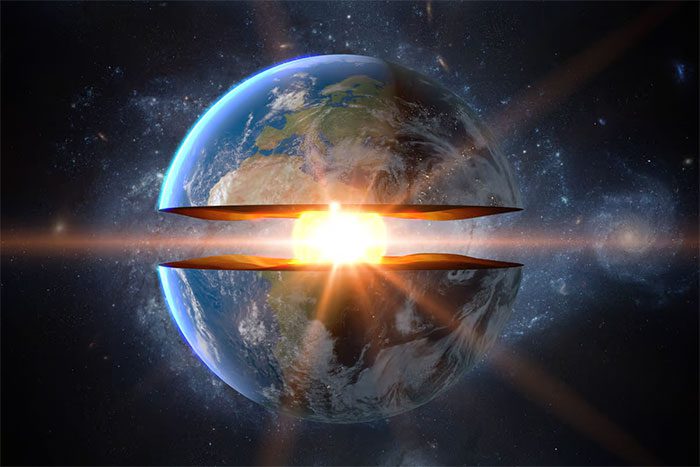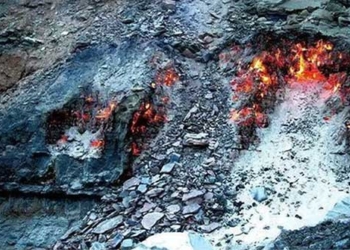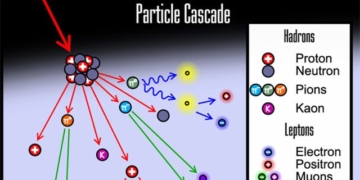Scientists have discovered high levels of helium-3 isotopes in lava from the Arctic. This suggests that the Earth’s core may be “leaking” helium gas.
While studying a 62 million-year-old lava flow on Baffin Island in the Arctic, a group of geochemists from the Woods Hole Oceanographic Institution and the California Institute of Technology (Caltech) unexpectedly discovered something unusual.

Illustration of the Earth’s core.
In a vast area, they found the ratios of helium-3 (³He), helium-4 (⁴He), and a third isotope at the highest levels ever recorded in volcanic rock on the Earth’s surface.
Helium is a fuel for nuclear fusion and may hold the key to the origins of life.
Helium-3 is a rare isotope associated with the Earth’s inner core. The Earth itself does not produce much helium-3, and any helium-3 that escapes the Earth will fly directly into space.
Additionally, helium-3 from today’s solar radiation would be repelled back into space by the Earth’s magnetic field.
Therefore, the researchers suggest that finding such high levels of helium-3 at a terrestrial site is “a major issue.” According to them, this may indicate that the Earth’s core is “leaking” helium gas.
“I find this discovery fascinating; it shows that the depths of the Earth are dynamic, with elements moving between the metallic and rocky parts of the planet,” said Forrest Horton, a geochemist at the Woods Hole Oceanographic Institution and the lead author of the study.
An important follow-up question posed by the researchers is: “If helium is leaking from the Earth’s core, are there other elements that are also escaping from the core? And when do these elements migrate into the planet’s rock?”
The study has been published in the scientific journal Nature.
|
The Earth’s mantle is not static. It continuously erupts lava to the surface while swallowing pieces of the Earth’s crust. With this constant disturbance, some primordial isotopes preserved within the planet have escaped over time, such as helium-3. However, scientists note that there is a certain limit to the amount of helium-3 that can be found in rocks formed from the mantle. Therefore, prior to this study, it was believed that if the helium in the mantle exceeded that limit, it might originate from elsewhere. |
- Treasure hunting in a place 380,000 km from Earth: Is the U.S. crazy or does it have the vision of a “king”?
- Near the tomb of Qin Shi Huang, why is China secretly operating a “machine” with a thrust of 500 tons?
- The Earth’s core is leaking, a “treasure” from 13.8 billion years ago is escaping to the surface





















































